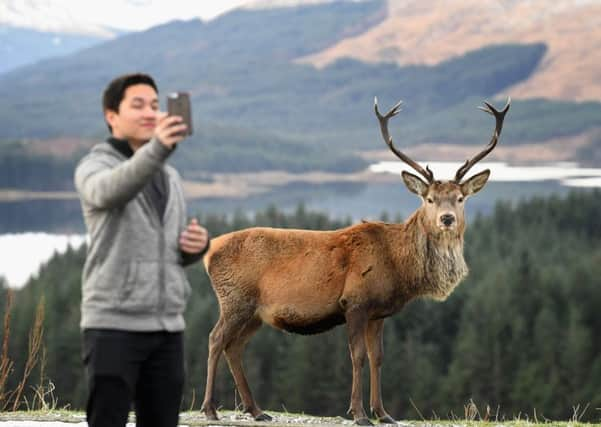Leader comment: Scotland's ailing economy needs tourists


Scotland’s economy is growing, but so slowly that it’s hardly noticeable.
Gross domestic product rose by 0.2 per cent in the third quarter of 2017 – about half the overall UK level, which is already one of the lowest of the world’s developed countries. A sector that contributes more than £11 billion to the Scottish economy – tourism – is of significant importance.
Advertisement
Hide AdAdvertisement
Hide AdRecently published figures showed there were some 14.1 million tourists in Scotland last year, up by two per cent. And it has now been revealed that Scotland’s visitor attractions have seen a rise in visitors of 13.9 per cent, compared to 7.3 per cent across the UK.
So it would appear that our tourist industry may be out-performing many other sectors in our economy and, for that reason, it is something that should be cherished.
However, there has recently been a backlash as the most popular places struggle to cope with the sheer numbers of visitors.
There are fears that Edinburgh could become the “Venice of the North”, which may sound good but is actually nothing to do with scenic bridges over canals. Instead it refers the exodus of local people from the centre of the famous Italian city as it has been taken over by all things designed to cater for visitors. The author Alexander McCall Smith has suggested the Scottish capital risks becoming a “vulgar wasteland of tourist tat shops, big hotels and nothing much else”.
So what to do? If we take steps to reduce the tourist numbers the economy will suffer, but if we carry on regardless our most beautiful places may become tarnished.
The fairly obvious answer is to find ways to encourage some of these millions of visitors to go to less travelled parts of Scotland. Skye, for example, is inundated with tourists in the height of summer, but Scotland’s other Hebridean islands can be just as beautiful and are less busy.
In Edinburgh, former army officer George Lowder, now chief of Transport for Edinburgh, has been promoting “wayfinding” as a means of handling the deluge of tourists. This involves creating “mapping products including digital resources” to help visitors find places off the rather-too-well beaten path. If it works, perhaps similar techniques could be used across the whole of Scotland. But, whatever works, we need to make sure we take full advantage of the world’s fondness for our beautiful country.
